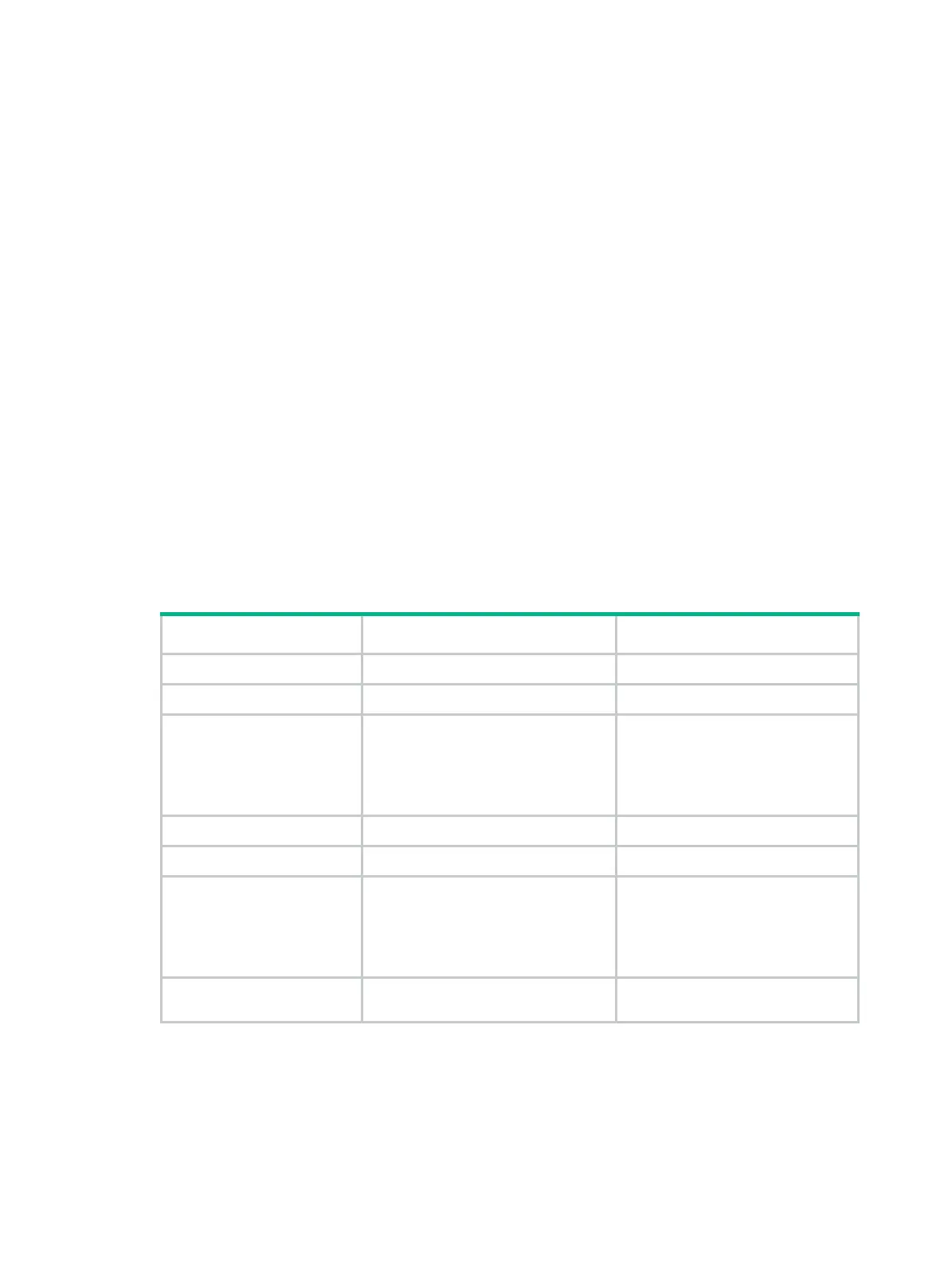121
• Make sure all commands in a schedule are compliant with the command syntax. The system
does not check the syntax when you assign a command to a job.
• A schedule cannot contain any of these commands: telnet, ftp, ssh2, and monitor process.
• A schedule does not support user interaction. If a command requires a yes or no answer, the
system always assumes that a Y or Yes is entered. If a command requires a character string
input, the system assumes that either the default character string (if any) is entered, or a null
string is entered.
• A schedule is executed in the background, and no output (except for logs, traps, and debug
information) is displayed for the schedule.
• A schedule can have up to 64 user roles. After the limit is reached, you cannot assign additional
user roles to the schedule.
• If you assign multiple user roles to a schedule, the system uses the following rules to determine
the effective user roles:
{ If you do not assign the security-audit user role, all assigned user roles take effect.
{ Assigning the security-audit user role to a schedule removes the other user role
assignments for the schedule. Assigning any other user roles to a schedule removes the
security-audit user role assignment for the schedule. Only the remaining user role
assignments take effect.
For more information about user roles, see "Configuring RBAC."
Configuration procedure
To configure a non-periodic schedule for the device:
Step Command Remarks
1. Enter system view.
system-view
N/A
2. Create a job.
scheduler job
job-name By default, no job exists.
3. Assign a command to
the job.
command
id
command
By default, no command is
assigned to a job.
You can assign multiple commands
to a job. A command with a smaller
ID will be executed first.
4. Exit system view.
quit
N/A
5. Create a schedule.
scheduler schedule
schedule-name By default, no schedule exists.
6. Assign a job to a
schedule.
job
job-name
By default, no job is assigned to a
schedule.
You can assign multiple jobs to a
schedule. The jobs will be executed
concurrently.
7. Assign user roles to the
schedule.
user-role
role-name
By default, a schedule has the user
roles of the schedule creator.

